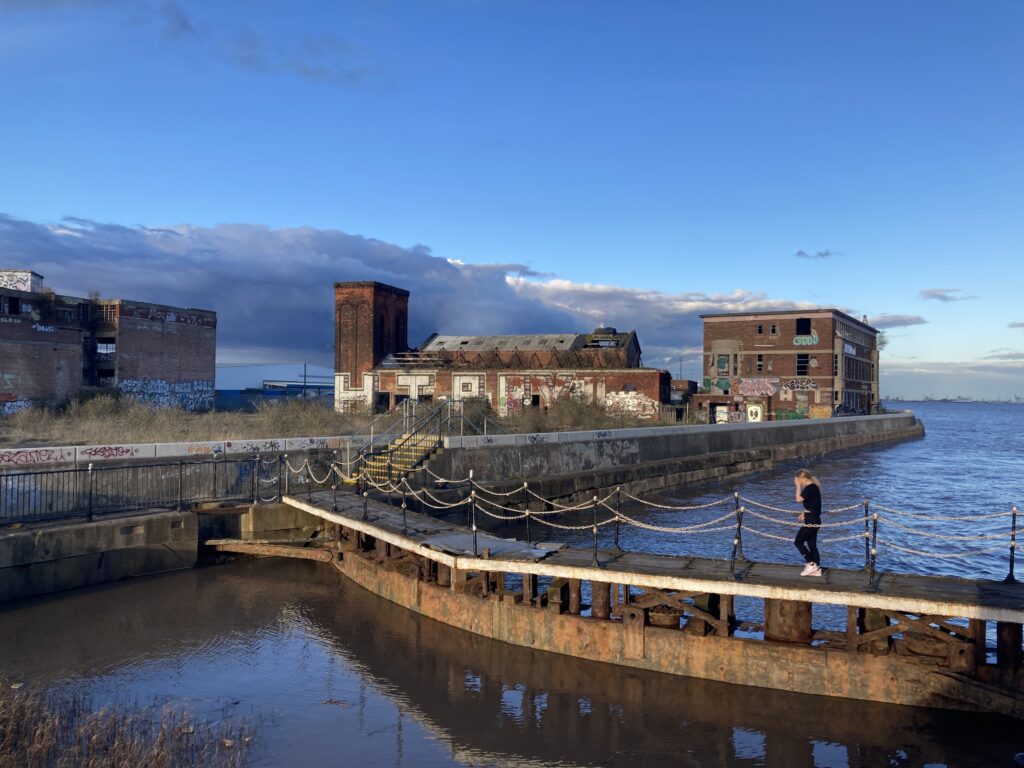Once the beating heart of Hull’s fishing industry, its future now appears bleak. Report by our grass-covered industrial sites correspondent Angus Young.
This coming November marks the 50th anniversary of the closure of St. Andrew’s Dock to shipping. While Hull’s dwindling fleet of deep-water fishing trawlers moved to nearby Albert Dock, businesses around the dock carried on for a few years before they too either relocated or called it a day.

In the early 1990s, part of it was re-developed as a bland retail and leisure park. A cinema, bowling alley and bar were subsequently replaced with more shops. As for the rest of the former dockland, it’s a perfect example of what half a century of slow but steady urban dereliction looks like. The real tragedy is that despite the handful of wrecked remaining empty buildings, the graffiti and the overgrown dock itself, this place still holds a special place in many peoples’ hearts.
Over the course of the dock’s 92 year-history around 6,000 men sailed from this very spot only to lose their lives at sea. All that marks this almost unimaginable loss of life is a small memorial on the dock bullnose, still regularly covered with flowers and messages of love. So what is actually happening at St. Andrew’s Dock? Sadly, the answer is not a lot.
Aside from the recent installation of higher flood defences by the Environment Agency, there’s been no discernible positive activity there in decades. Much of that is down to the mixed ownership of the site. Most of the land is owned by retired vet John Levison. He recently developed the Albion Mills business park in Willerby where a new phase of construction is currently underway. As yet, there’s no sign he’s close to doing something similar at the dock.

Most of the buildings including the former Lord Line offices, what’s left of the dock’s original hydraulic tower and pumping station and the old Seafish building on the bullnose are owned by companies linked to Philip Akrill. Last year he was made bankrupt after a successful court petition by a creditor, a finance company specialising in development finance and bridging loans. Despite a flurry of planning applications relating to the buildings in recent years, there’s no sign of anything actually being delivered. It’s not clear what, if any, influence he still holds.
Two other small parcels of land are also in different ownership. The vandalised former Boston insurance building is believed to be owned by Associated British Ports while Orchard Street Investment Management own a strip of land near the adjacent retail park which they also own. Without any shared vision or grand plan for the dock, it’s just being left to what Nature throws at it.
A compulsory purchase order covering the whole site seems the most obvious solution, although legislation covering CPOs requires feasible development proposals to be in place. As yet, there are none. CPOs also require the city council to submit one. Historically, the authority has always steered clear of any direct hands-on involvement at the site. The sticking point in coming up with a big new plan for the dock is, of course, the money needed to turn it into a reality.
Despite its appeal as a waterfront location, it’s going to take someone with very deep pockets, steely determination and a lot of imagination to reverse the decline of the last 50 years and build something Hull can be proud of once again.
We live in hope.
